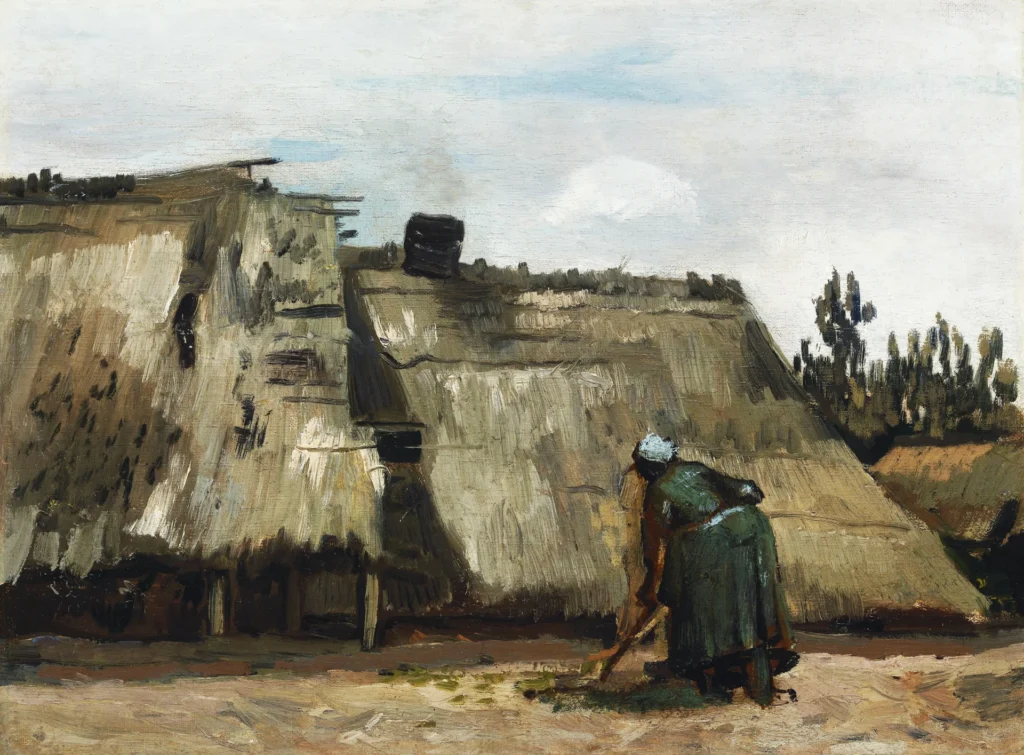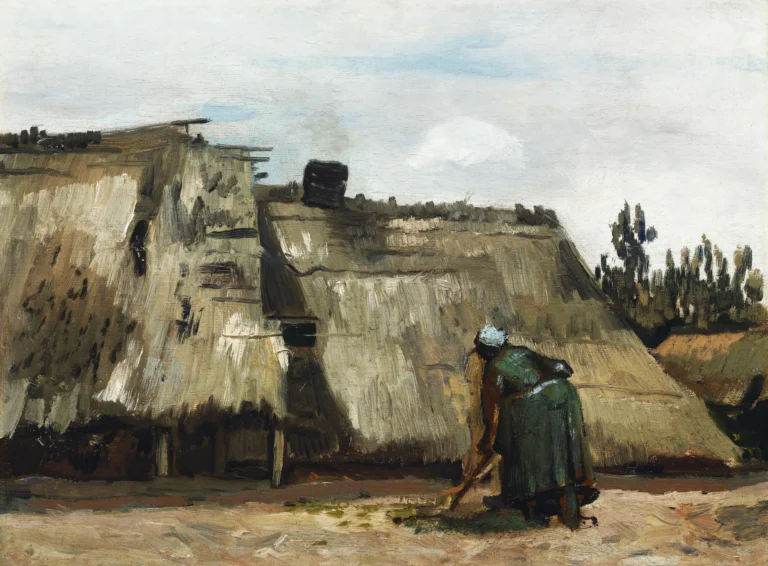A Peasant Woman Digging In Front Of Her Cottage (1885)
Created in June 1885, this oil on canvas work by Vincent van Gogh exemplifies his early thematic focus on peasant life. The painting portrays a solitary woman digging in front of her rustic cottage, characterized by a palette dominated by earthy tones of browns and greens, showcasing Van Gogh's distinctive brushwork. The image conveys a sense of toil and dedication, reflecting the artist's empathy for farmers and their honest, hardworking existence. Currently housed at the Art Institute of Chicago, this piece is a vital aspect of Van Gogh’s artistic journey.
Year 1885
About the Artwork
This painting emerged during a transformative period in Van Gogh's life when he returned to Nuenen, Netherlands, following a series of personal hardships. Living in his parents’ house, he sought to regain a sense of purpose through his art, focusing on the everyday lives of the rural poor. This particular artwork captures not just a moment of labor, but also a deep-rooted connection between the peasant woman and her environment, portraying her as an integral part of the landscape. Van Gogh's choice of subjects often highlighted the dignity of labor, a theme he felt resonated with the struggles he faced himself, making this painting a reflection of both his artistic aspirations and personal journey.
Did You Know
Liked what you see? Add it to your collection.
Enjoyed reading? Share it.
... continued
Location and Current Status
The painting is part of the collection at the Art Institute of Chicago, where it is currently on view in Gallery 241.
Date and Place of Creation
Van Gogh painted this work in Nuenen, Netherlands, in June 1885, during a period when he had returned to his parents' home after experiencing loneliness and poverty in The Hague.
Medium and Dimensions
The painting is executed in oil on canvas on cardboard, measuring 31.3 x 42.0 cm (12 5/16 x 16 1/2 inches). When framed, it measures 52.1 x 62.6 x 10.8 cm (20 1/2 x 24 5/8 x 4 1/4 inches).
Style and Technique
During this period, Van Gogh used a more monochromatic palette of browns, greens, and grays, which was characteristic of his early work in the Netherlands. The painting features loose, directional brushstrokes and earthy tones, emphasizing the connection between the peasant woman, the cottage, and the surrounding environment.
Subject Matter
The painting depicts a peasant woman digging in front of her cottage, a theme that reflects Van Gogh's interest in the lives of rural laborers and their homes. He described these subjects to his brother Theo as "human nests" and felt a deep connection to the people and their environments.
Provenance
The painting was bequeathed to the Art Institute of Chicago by Dr. John J. Ireland and is referenced under the number 1968.92.










